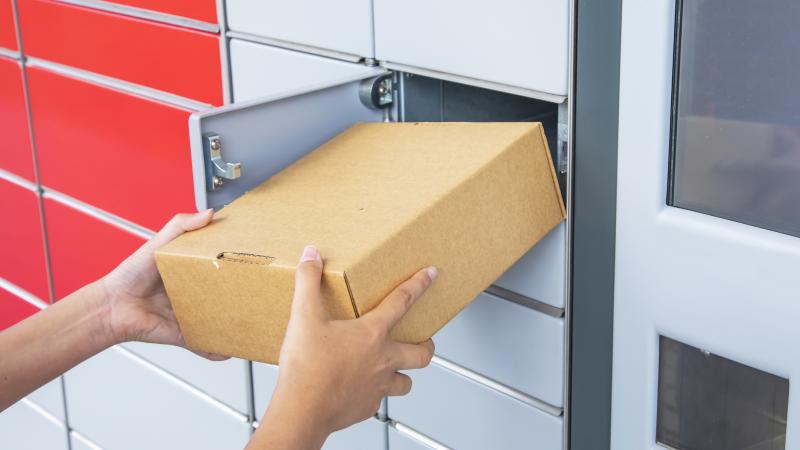People who receive deliveries more frequently are less likely to be willing to pick up their packages
April 4, 2022

As the demand for home deliveries from online purchases continues to increase, problems like traffic congestion, parking violations, and air pollution from the delivery trucks also grow, particularly in dense, congested, urban areas.
To counter these negative side effects, companies are exploring different options for getting packages to the people who ordered them. Alternative delivery locations (ADLs) such as delivery lockers like Amazon’s Hub Locker, postal stores, or partnerships between brick-and-mortar stores and delivery companies such as the UPS Access Point have been developed as viable solutions.
In recently published research, Cara Wang, an associate professor in the Department of Civil and Environmental Engineering at Rensselaer Polytechnic Institute, and Woojung Kim, a doctoral student in the same department at Rensselaer, found that some, but not all consumers, will accept going to the ADL to get their packages rather than having them delivered directly to their front door.
Using advanced computer modeling in conjunction with the New York City 2018 Department of Transportation Citywide Mobility Survey database, the scholars found that people who receive more packages are actually among the least likely to use ADLs.
The research also showed that the people who are most likely to use ADLs are those from underrepresented groups who don’t receive many packages.
“There is a target group of frequent online shoppers that is more of a burden to the freight system and the environment overall,” Dr. Wang said. “Through new technology or developing incentives, cities need to find a way to encourage communities to understand the benefits of ADLs.”
Another question explored by the researchers is the distance people will travel to an ADL to retrieve the delivery. Their research showed that males and full-time students are more willing to travel further while people who live in apartments or older people are less willing to travel any more than two city blocks.
“It’s clear from the data that because different populations use ADLs differently, transportation planners cannot implement a one-size-fits-all solution to every neighborhood, every city,” Dr. Wang said. “We are a long way from finding all the answers but results from this research can help policymakers in dense urban areas better establish strategies regarding the ADLs as a way to mitigate negative externalities generated by delivery vehicles.”
The paper, “The adoption of alternative delivery locations in New York City: Who and how far,” was recently published in Transportation Research Part A: Policy and Practice. It is the first study to comprehensively investigate behaviors on the ADL from the users’ perspective.
At Rensselaer, Dr. Wang and Mr. Kim work in the Center for Infrastructure, Transportation, and the Environment (CITE) led by Dr. José Holguín-Veras. CITE at Rensselaer is a world leader in the investigation of complex transportation, infrastructure, and environmental problems and the development of solutions and sustainable approaches to these issues. Recent research topics from CITE includes a study of home delivery services during the pandemic, the use of electric long-haul tractor trailers, and urban freight.